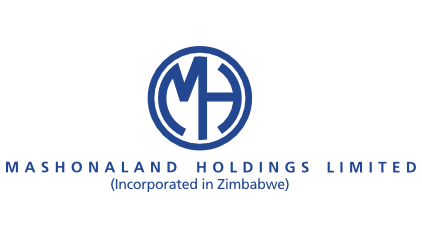How did lithium perform in 2022?
At the end of 2021, analysts were expecting lithium demand to continue outpacing supply in the year ahead.
Speaking about the lithium market in 2022, Daisy Jennings-Gray, senior analyst at Benchmark Mineral Intelligence, said she anticipated a huge hike in prices through 2022, but the scale at which this happened was unprecedented.
“What was particularly surprising compared to 2021 was the steep climb in feedstock prices, which really indicated the extent of supply tightness in the market,” she explained to INN. “(It also) highlighted that high lithium prices aren’t just reactionary to sentiment, but a reflection of the raw material disconnect.”
In 2022, Williams Adams, head of base and battery metals research at price reporting agency Fastmarkets, was also expecting prices to continue to rise, but not as much as they ended up doing.
“That said, having reached a high at 512,500 yuan per tonne in March, we did not think we had seen the high — we expected prices to rise further before dipping towards the end of the year,” he said. “In the end, prices climbed to 597,500 yuan in mid-November and were last at 567,500 yuan, so they are indeed slipping as 2022 draws to a close.”
When looking at how different lithium products performed, lithium carbonate prices started 2022 at a significant premium to hydroxide, at 70,000 yuan, according to Fastmarkets data. This difference was driven by strong demand from lithium-iron-phosphate (LFP) batteries, which use lithium carbonate.
LFP batteries have been on the rise in China and are used for shorter-range, durable, lower-cost EVs. LFP batteries currently coexist with higher-nickel cathode types, such as nickel-cobalt-manganese (NCM), which can provide longer-range travel and higher energy density for consumers with range anxiety. These cathodes require lithium hydroxide instead of carbonate.
“Demand for NCM was suffering from a combination of stronger demand for LFP in China and as parts shortages constrained EV production in Europe and the US, which affected demand,” Adams said.
In China, carbonate is still at a premium to hydroxide, albeit only around 5,000 yuan.
Outside of China, however, hydroxide prices have been notably higher than carbonate prices on the spot market, according to Benchmark Mineral Intelligence data.
“(This is due to) a combination of a number of factors, including strong demand for high-nickel cathodes in the Japanese and Korean markets, as well as battery-grade hydroxide supply tightness driven by sanctions on Russia, where some of Europe’s lithium refineries are based,” Jennings-Gray said.
What is the lithium supply and demand forecast for 2023?
Most lithium demand comes from the EV space, which has seen upward momentum in recent years. Global EV sales surpassed the 6 million mark in 2021, and in 2023, Daniel Jimenez of iLi Markets is expecting demand for EVs to grow at similar levels to 2022.
“The question is, will the lithium supply be there? And when you look roughly at the increase of supply in the market next year, where will that be coming from? Well, it will be coming mostly from incumbents,” he said.
Benchmark Mineral Intelligence expects demand growth of around 40 percent in 2023 versus 2022 — another “notable step up.”
Demand from China is still seen rising the fastest, but growth is set to pick up considerably in the rest of Asia. “Europe and North America will also notice a step up in demand as their downstream battery supply chains begin to develop,” Jennings-Gray said.
As the new year begins, LFP batteries are expected to continue taking market share from NCM, but both battery chemistries are expected to see strong growth, which translates into good news for both lithium carbonate and lithium hydroxide.
“We do not expect such a blow out in the premium in 2023 — we expect both salts to roughly trade at the same price level in 2023,” Fastmarkets’ Adams said.
Benchmark Mineral Intelligence is also expecting the LFP market to remain strong. “But high-nickel cathode producers have also performed well, so it seems likely the two chemicals’ relationship will continue to interchange,” Jennings-Gray said. “Additionally, with direct hydroxide conversion from spodumene allowing for easier production of the chemical, it doesn’t always have to be produced from converting carbonate, removing some of the baked-in premium hydroxide has always held over carbonate.”
Looking over to supply, Benchmark Mineral Intelligence forecasts some growth, but not enough to see the market balance.
“As always, lithium projects are likely to face delays — typically these are technical, but increasingly it has been about finding a knowledgeable labor force for the job,” Jennings-Gray said.
“Other supply risks come in the form of geopolitics and climate change, such as the issues we saw in Sichuan province in 2021 during the heatwave, or in Yichun in December when reports of thallium in the water shut down operations for a couple of days.”
All in all, Benchmark Mineral Intelligence is forecasting that the market will be in deficit, although some additional supply might ease this deficit a little. In contrast, Fastmarkets expects a small supply surplus to develop in 2023.
“We expect a relatively stronger pick-up in the US, demand to recover in Europe as parts shortages ease and as there are long waiting lists for EVs,” Adams said. “But a hard economic recession in Europe or the US could become a headwind — we don’t expect it to, due to the long waiting lists, but that could change.”
Another factor that could dampen demand is subsidy changes in China, Adams added. “While we expect a small surplus next year, we think the surplus will be absorbed by restocking and will only help reduce the overall feeling of tightness,” Adams said.
Fastmarkets’ research team sees 2022 lithium carbonate equivalent (LCE) demand coming in at 698,900 tonnes, with a rise to 884,400 tonnes in 2023. Meanwhile, the firm sees LCE supply rising from 679,400 tonnes in 2022 to 895,900 tonnes in 2023, creating a nominal surplus of 11,500 tonnes.
What’s the outlook for lithium prices in 2023?
Following another strong year, investors and market watchers are wondering what’s ahead for lithium prices.
When asked about lithium in 2023, Fastmarkets’ Adams said he expects prices to start drifting lower in the next 12 months.
“A supply response is already underway, with additional production coming from new capacity, restarts and expansions,” he said. “As this supply reaches the market, allowing for ramp-up issues and time for material to be qualified, we expect the supply tightness to ease, which should mean consumers feel less need to chase prices higher.”
Prices started to soften in the last few weeks of December ahead of Chinese New Year, which comes particularly early in 2023; uncertainty related to COVID-19 is feeding into this sentiment as well.
“However, it’s very typical for lithium prices to correct slightly heading into Q1, which is when downstream demand from the EV sector is weakest,” Jennings-Gray said.
As mentioned, her firm is expecting demand in 2023 to be notably higher than in 2022. “Combined with the fact that feedstock supply is set to remain tight and spodumene offtake prices still have room to rise, based on movements in the chemicals market over early Q4, there’s still plenty of upside potential for lithium carbonate and hydroxide prices in 2023,” the analyst said. “Some legacy contracts take longer to catch up with the spot market as well, so you need to factor that in too.”
It’s important to note that lithium traded at spot prices only reflects a portion of the market — in fact, most lithium is locked up in contracts, which in some cases include fixed pricing.
“Contracts by and large are not necessarily based on that spot price,” Chris Berry of House Mountain Partners said. “What we are seeing is a situation where contracts are indexed, and rather than focused on spot prices or fixed prices, you’re going to see pricing contracts embedded with floating pricing going forward.”
For Berry, these contracts would have floors and ceilings embedded in them to protect both buyer and seller.
“Because at the end of the day, what we’re trying to do is grow this market from a volume perspective sustainably. And putting floors and ceilings in contracts is one way to do that,” he said.
What factors will move the lithium market in 2023?
Speaking about the challenges for junior miners as 2023 begins, Jennings-Gray said that investment remains a challenge.
“However, with the downstream becoming increasingly switched on to the raw material disconnect, this also presents an opportunity for project developers to see new funding coming in directly from cathode, cell and EV manufacturers,” she said.
For his part, Adams doesn’t envision prices falling back below incentive levels for many years, meaning there is a lot of opportunity.
“The challenges are getting through the permitting stages, getting labor and skilled labor with the relevant know-how,” he commented to INN. “There are a lot of downstream users very keen to secure supply, so they should have little difficulty getting financed as long as they have quality projects.”
He added that in 2023 some of the heat will come out of prices, and that could dampen sentiment.
“But this should make for a better environment for mutually beneficial deals and partnerships to be made, which will be all-important for matching consumers with suppliers,” he said.
In terms of trends to watch, Jennings-Gray will be keeping an eye on alternative sources of lithium.
“The extent of success in regards to development of hard-rock assets in Jiangxi and Africa will be an interesting development,” she said. “Additionally, any breakthroughs in direct lithium extraction or alternative extraction methods, although most of these projects still seem to be focused on the midterm rather than near term.”
Another catalyst to pay attention to next year will be how directly involved OEMs get with the miners. “(This) could really see project pace pick up if huge investments are offered by the customers who need lithium the most,” Jennings-Gray said.
Speaking with INN at this year’s Benchmark Week, an entire week of conferences centered around the lithium-ion battery supply chain, CEO Simon Moores said OEMs have to take control of their supply chains.
“A lot of deals have been done with sort of development-stage junior mining, but a lot of them are very weak deals,” Moores said. “Reality is these companies, these developers need hard cash to get things up and running.” — www.investingnews.com












